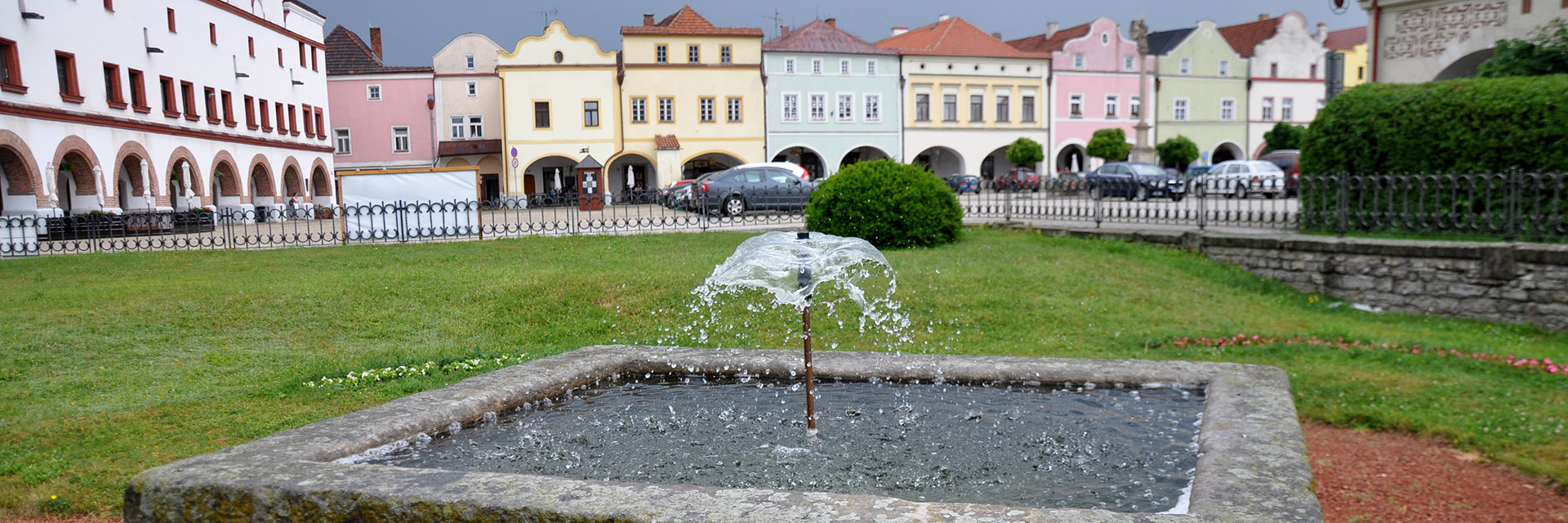2016
The first three stages of the project solution were developed:
- The content of the first stage was the search of specialist literature, the collection, study and processing of archival materials on selected heritage-protected localities.
- In 2016, a one-time survey of the state of the water features of several dozen national cultural monuments and heritage reserves throughout the Czech Republic was carried out following questionnaire surveys carried out in the project from the NAKI I call “DF12P01OVV035 – Identification of significant areas with cultural and historical values threatened by natural and anthropogenic influences” (in years 2012-2015). Part of the survey included clarification of information from questionnaires, local investigation of the care of water features, environmental quality of water features of the given location (quality of water and sediments, composition of phytoplankton) and possibly also a survey of fish stocks.
- At the same time, one-time samples of water, sediments and bio-stone were taken for an indicative assessment of the quality and pollution of the aquatic environment. The last elaborated stage of the solution was focused on the analysis of environmentally friendly and non-invasive technologies for maintaining or improving the quality of the water environment and reducing the amount and dangerous properties of bottom sediment in the reservoirs of cultural monuments and historical settlements using modern and gentle technologies and biological-enzymatic preparations.
2017–2018
In 2017 and 2018, a two-year detailed monitoring of the environment (water, sediments, bioseston, zooplankton and zoobenthos, fish) of the water elements of the selected circle of monuments (18 locations – representatives of the National Park, VPR and MPR) was carried out, which made it possible to obtain comprehensive information about the quality of the environment and its pollution load (at relevant locations, inflows and pollution inputs were also monitored) and its changes during the year (spring, summer, autumn and winter aspect), during two consecutive years.
At the same time, research stages focused on experimental work with biological and biochemical preparations for the treatment of the aquatic environment and the reduction or modification of the properties of bottom sediments were solved in this period, both on a laboratory and semi-operational scale. Research was also carried out on the appropriate setting and composition (quantity, species) of fish stocks for various types of water features (ornamental reservoirs, ponds) using the previous experience of part of the research team (the office of the Office of the Academy of Sciences of the Czech Republic). One of the studied directions of research was, for example, the introduction of predatory fish for biomanipulation and white carp for biomelioration purposes into selected water features and monitoring the behavior of the fish and their contribution.
The design of a simple bioreactor was also developed and tested, which would allow water feature management and care workers to prepare the required amount of cultured mixture of bacteria for release into water features and thus save funds for the purchase of biopreparations.
In 2018, Czech and foreign historiography was mapped, noting the role of fish and the economy linked to them, with an emphasis on the period from the beginning of the 19th century, when there was a revival of interest in fish farming (mainly carp, trout and predatory forms) and also in introduction of new procedures and scientific methods, including chemical analyzes of water. The main focus of research in 2018 concerned the functioning of two hydrobiological stations. It was a fisheries-hydrobiological station on František Harrach’s estate in Velké Meziříčí and a similar research station on the Liechtenstein estate in Lednice.
2019
In 2019, work on semi-operational testing of the application of biopreparations for water and sediment treatment took place and was completed. Testing of the application of biopreparations also took place this year, already as an operational solution, also on water elements of specific locations. In 2019, the remaining work was carried out on the development and verification of the bioreactor using a different internal layout, power supply method, water heating and ventilation. In the part devoted to the study of fish stocks, the solution was focused on the following thematic areas, which already included work leading to the inventory of fish stock management procedures and their projection into an output of the “Npam” type (monumental procedure) and into a professional monograph:
- Principles of fish stock surveys and environmental nutrient surveys for target fish species
- Principles of the composition of fish stocks (with a division into production ponds and reservoirs in heritage-protected areas and localities and into ornamental reservoirs and pools)
- Recommended fish stock management methods
- Principles of stocking and breeding of predatory fish
- Knowledge of the use of fish for biomelioration of the environment of water elements, improvement of their quality
- Recommendations for the maintenance and care of fish stocks
- List of suitable fish species for water elements of cultural monuments and definition of their demands on the aquatic environment
In 2019, the solution of the last, sixth, stage of the project continued, which, according to the plan, was focused on “finalization, publicity, presentation of the project solution”, in several forms, which include professional outputs (contributions and articles in anthologies, peer-reviewed articles), certified practical procedures for the care and maintenance of water features (monument procedures), publicly available professional monographs and working meetings (meetings, workshops). The research process and the achieved results are summarized in detail in the professional monograph entitled “Environmental quality of water elements of cultural monuments and historical settlements. Assessment of the state and possibilities of quality management in the framework of heritage conservation”.
The book is available in printed form on request at the VÚV TGM workplace in Brno. It can be downloaded in electronic form in the Outputs – Publications tab on the project website here (in Czech).


